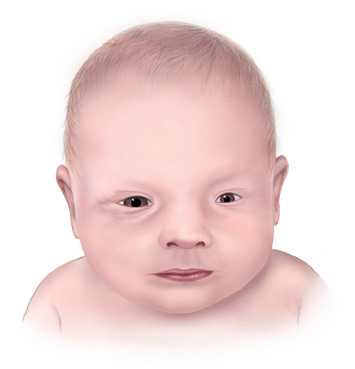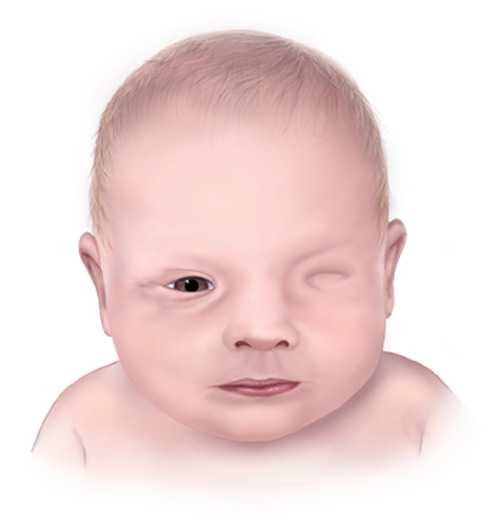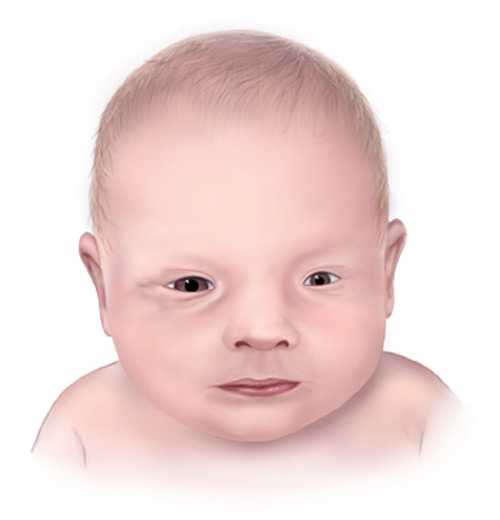Facts about Anophthalmia/Microphthalmia
Anophthalmia and microphthalmia are birth defects of a baby’s eye(s). Anophthalmia is a birth defect where a baby is born without one or both eyes. Microphthalmia is a birth defect in which one or both eyes did not develop fully, so they are small.
What is Anophthalmia and Microphthalmia?
Anophthalmia and microphthalmia develop during pregnancy and can occur alone, with other birth defects, or as part of a syndrome. Anophthalmia and microphthalmia often result in blindness or limited vision.
Occurrence
Anophthalmia and microphthalmia are rare. Researchers estimate that about 1 in every 5,300 babies born in the United States will have anophthalmia or microphthalmia.1 This means about 780 U.S. babies are born with these conditions each year.1
Causes and Risk Factors
The causes of anophthalmia and microphthalmia among most infants are unknown. Some babies have anophthalmia or microphthalmia because of a change in their genes or chromosomes. Anophthalmia and microphthalmia can also be caused by taking certain medicines, like isotretinoin (Accutane®) or thalidomide, during pregnancy. These medicines can lead to a pattern of birth defects, which can include anophthalmia or microphthalmia. These defects might also be caused by a combination of genes and other factors, such as the things the mother comes in contact with in the environment or what the mother eats or drinks, or certain medicines she uses during pregnancy.
Like many families of children with a birth defect, CDC wants to find out what causes them. Understanding the factors that are more common among babies with a birth defect will help us learn more about the causes. CDC funds the Centers for Birth Defects Research and Prevention, which collaborate on large studies such as the National Birth Defects Prevention Study (NBDPS; births 1997-2011) and the Birth Defects Study To Evaluate Pregnancy exposureS (BD-STEPS; began with births in 2014), to understand the causes of and risks for birth defects, including anophthalmia and microphthalmia.
CDC continues to study birth defects, such as anophthalmia and microphthalmia, and how to prevent them. If you are pregnant or thinking about becoming pregnant, talk with your doctor about ways to increase your chances of having a healthy baby.
Bryton and Fenix’s Story

Bryton was born with anophthalmia. Read his story as well as other stories from families affected by eye defects »
Diagnosis
Anophthalmia and microphthalmia can either be diagnosed during pregnancy or after birth. During pregnancy, doctors can often identify anophthalmia and microphthalmia through an ultrasound or a CT scan (special x-ray test) and sometimes with certain genetic testing. After birth, a doctor can identify anophthalmia and microphthalmia by examining the baby. A doctor will also perform a thorough physical exam to look for any other birth defects that may be present.
Treatment
There is no treatment available that will create a new eye or that will restore complete vision for those affected by anophthalmia or microphthalmia. A baby born with one of these conditions should be seen by a team of special eye doctors:
- An ophthalmologist, a doctor specially trained to care for eyes
- An ocularist, a healthcare provider who is specially trained in making and fitting prosthetic eyes
- An oculoplastic surgeon, a doctor who specializes in surgery for the eye and eye socket
The eye sockets are critical for a baby’s face to grow and develop properly. If a baby has one of these conditions, the bones that shape the eye socket may not grow properly. Babies can be fitted with a plastic structure called a conformer that can help the eye socket and bones to grow properly. As babies get older, these devices will need to be enlarged to help expand the eye socket. Also, as children age, they can be fitted for an artificial eye.
A team of eye specialists should frequently monitor children with these conditions early in life. If other conditions arise, like a cataract or detached retina, children might need surgery to repair these other conditions. If anophthalmia or microphthalmia affects only one eye, the ophthalmologist can suggest ways to protect and preserve sight in the healthy eye. Depending on the severity of anophthalmia and microphthalmia, children might need surgery. It is important to talk to their team of eye specialists to determine the best plan of action.
Babies born with these conditions can often benefit from early intervention and therapy to help their development and mobility.
Other Resources
The views of this organization are its own and do not reflect the official position of CDC.
- International Children’s Anophthalmia Network
The International Children’s Anophthalmia & Microphthalmia Network is a group of families and professionals dedicated to lending support to individuals who want to learn more about microphthalmia and anophthalmia.
References
- Parker SE, Mai CT, Canfield MA, Rickard R, Wang Y, Meyer RE, Anderson P, Mason CA, Collins JS, Kirby RS, Correa A and the National Birth Defects Prevention Network. Updated national birth prevalence estimates for selected birth defects in the United States, 2004-2006. Birth Defects Res A Clin Mol Teratol. 2010;88(12):1008-16.
- Page last reviewed: June 27, 2017
- Page last updated: December 10, 2015
- Content source:



 ShareCompartir
ShareCompartir



